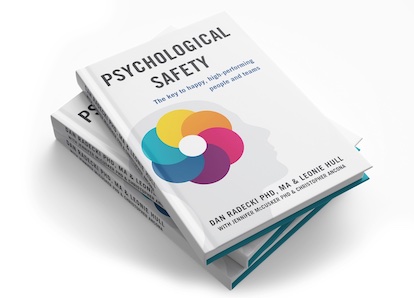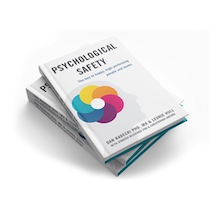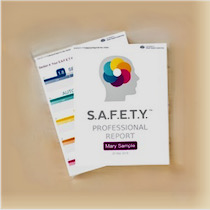In my last article, I wrote how I felt that the Golden Rule needs to be revised. Reader feedback made it evident that I was only touching on the Golden Rule superficially. See, the Golden Rule actually inherently takes psychological safety into consideration if it is taken at a deeper level rather than literally word-for-word.
“Do unto others as you would have them do unto you.”
Superficially, this could mean that if autonomy mattered to me and I did not want to be micromanaged, I would not micromanage you, even if you like to be micromanaged, as explained in detail in the most recent article. But by digging deeper, I can interpret the Golden Rule this way: I should consider people’s individual needs and desires when I interact with them – just as I would want done to me.
This way of looking at the Golden Rule is far more profound because of its implications. It means that I need to take the time to get to know you. I need to take the time to empathize with you and to understand your desires, fears, goals and needs. It requires me to work beyond a superficial simple generosity and towards a deeper connection. That is the point of ABL’s S.A.F.E.T.Y. brain-based training and it’s the point of the Golden Rule at its essence.
Now, when I am walking down the street and I see a stranger in need, I have no choice but to apply a superficial execution of the Golden Rule. Conversely, when I expect to work with the same group of people for years, then getting to know them at the level that allows for an understanding of the other person’s needs is very possible. And to NOT seek this understanding is negligence.
Managing with the Golden Rule
Sometimes, our own triggers can get in the way though. Imagine if you are a manager who has a high need for autonomy, and your standard operating procedure is to give your team members high levels of autonomy. This would entail giving end goals and a few scant rules and then “empowering” the team member to get to that goal without much direction – giving them the space to succeed and learn from their mistakes on their own.
This method of management is all the hype these days, and it takes a lot of stress off a manager compared to the stress that is brought on by micromanaging – which requires a manager to be everywhere and overseeing everything and knowing about all that goes on – a tremendous task. Furthermore, taking the time to micromanage prevents the manager from networking, and it prevents them from managing the politics that go on around the department.
It is for these reasons that a manager who is high on the need for autonomy can easily justify to him or herself that the person who is high in the need for security is a drain on the team, is a pain not worth dealing with, or is a bad employee. It’s easy for the manager to start “should-ing” all over that employee, he or she SHOULD take more control, SHOULD take more risks, SHOULD be more autonomous, SHOULD change or leave. ‘Shoulding’ is a very well known cognitive distortion and is set off by a S.A.F.E.T.Y.™ trigger.
This is one example of how following the deeper meaning of the Golden Rule is much more difficult than it appears. Your own triggers will get in your way, and your brain is well trained in all the reasons that you are right. It all sounds so logical and obvious to you, but that logic is actually created by your sensitivity to an emotional trigger.
Understanding S.A.F.E.T.Y.™ Triggers
So, what can you do? How do you know if you are justifying your own triggers instead of considering the others’ triggers?
First, start with empathy. Really make an effort to put yourself into the other person’s shoes. Spend energy understanding their position and contrast it with yours. If you decide that it is best for the company (and that person’s career goals) that they require coaching in order to make change, then, coach them from where they are. Next, see their progress from the movement of their position instead of looking at it from the distance between you two. I mean, if you are 100 miles apart, then don’t look at it from the depressing position that the person is still 95 miles away, but instead, look at it like the person has moved 5 miles in a useful direction.
Secondly, know your own trigger. Know the implications of that trigger on your thinking, your actions, and the way you set things up for yourself and others. Look at how your S.A.F.E.T.Y.™ triggers cause you to make decisions. Evaluate how your S.A.F.E.T.Y.™ triggers impact your way of approaching risks. Consider how your S.A.F.E.T.Y.™ triggers govern your social and management style. And observe how your S.A.F.E.T.Y.™ triggers cause you to judge others behaviors and actions. Gain awareness of yourself.
And finally, bring it all together so you can have a clear larger strategical picture of the overarching situation. Know your team as individuals. Know yourself. Know the goals that you all want or need to achieve – both business and personal. From that point, you can build the habit of looking at the path to the goals through a wider and broader lens. You can see how the changing situation impacts the S.A.F.E.T.Y.™ landscape in your team, and you can adjust your actions as you move forward. This process of following the Golden Rule at a deeper level is how you achieve your goals with the highest efficiency – because your whole team can operate at their individual and collective highest efficiency.
If you want to learn more about your S.A.F.E.T.Y.™ triggers, you can buy our book on Amazon or take the free S.A.F.E.T.Y.™ assessment and find out your top domain.













